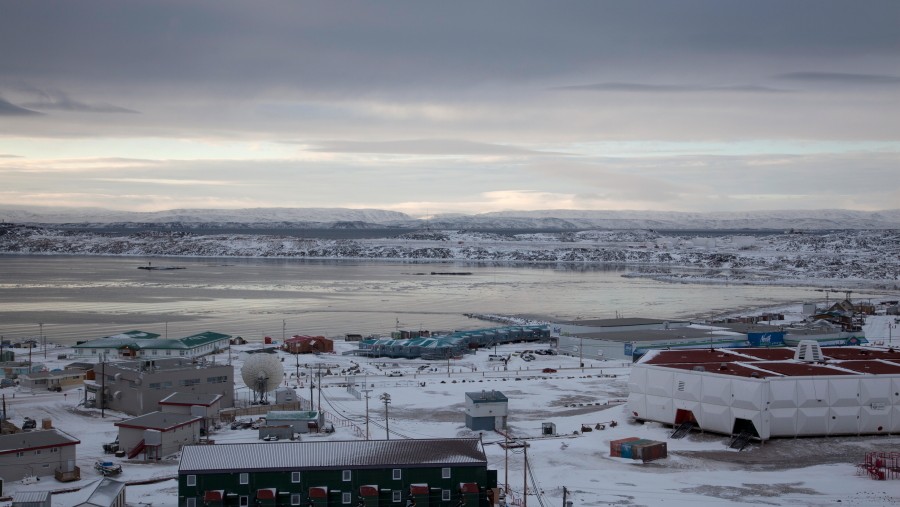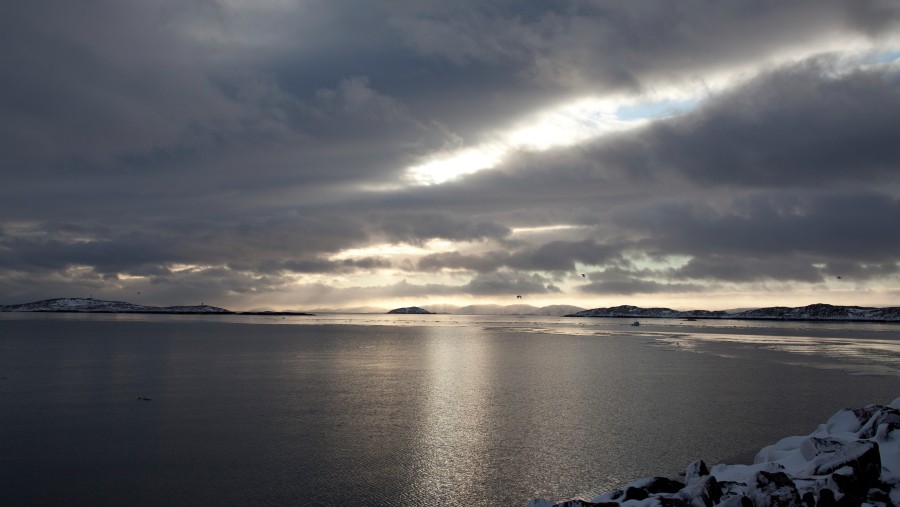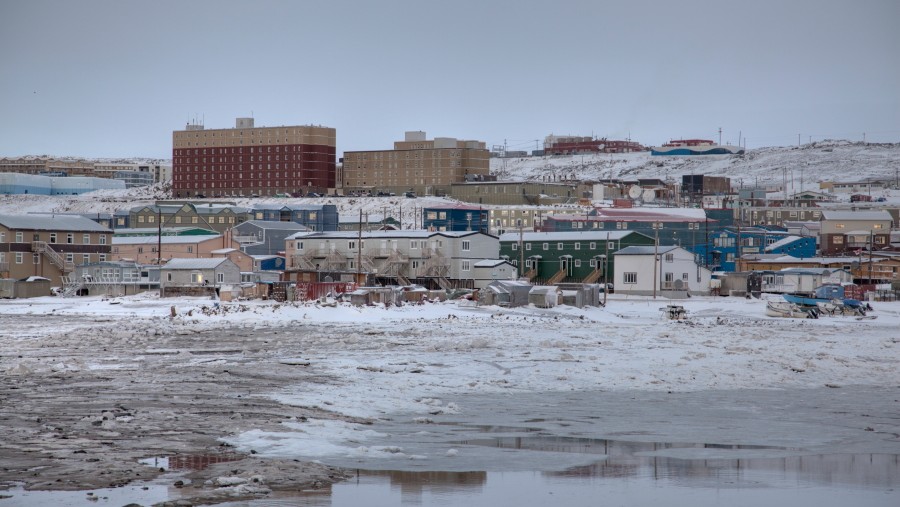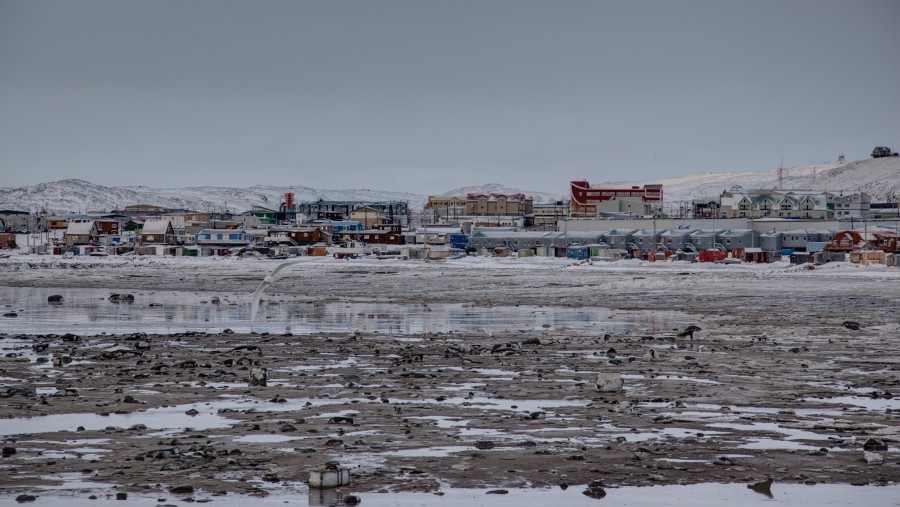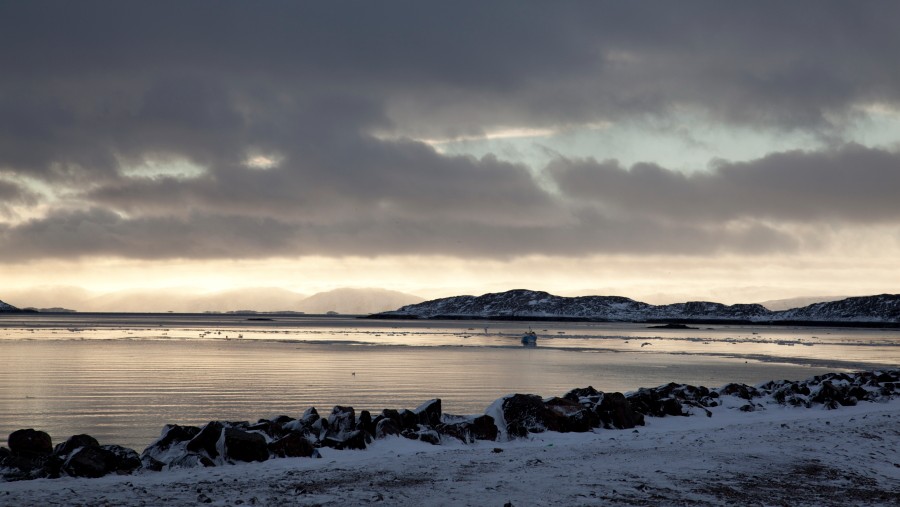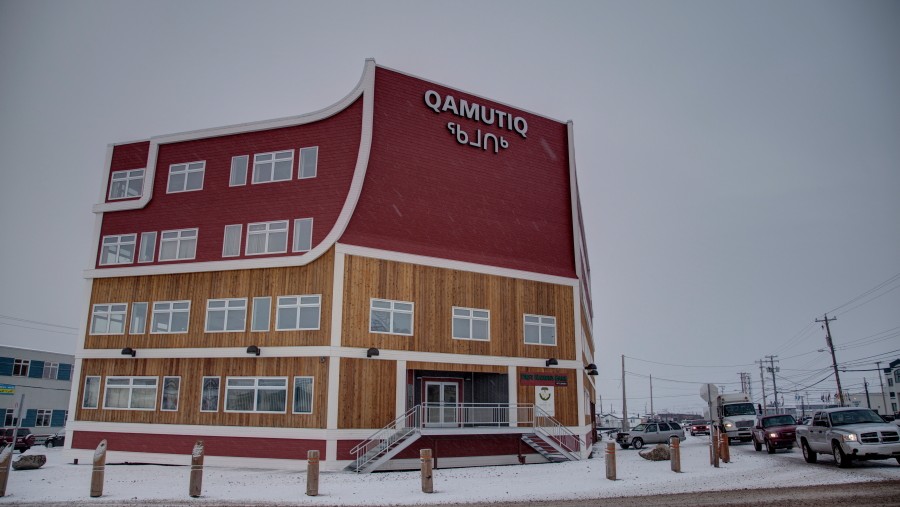Iqaluit
ᐃᖃᓗᐃᑦ, « place of many fish »
Capital of Nunavut
Population : 7,250
Longitude: 68°33’00” O
Latitude: 63°45’00” N
Average temperature in August: 7,6°C
Average temperature in January: -25,7°C
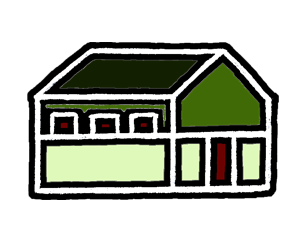 Madeleine Redfern – Prior Mayor of Iqaluit (2012)
Madeleine Redfern – Prior Mayor of Iqaluit (2012)
« Iqaluit is a very different and interesting place. It is part of Canada and people just don’t realize how vast our geography is; Nunavut is 2 millions km2. Iqaluit is dynamic, is growing and it’s very beautiful!
In fall the temperatures are ranging between just below zero to about -15°. It does get colder in the winter, it can go on average from -15° to -40° and then with the wind chill it can get colder then that. The spring here is glorious, we have lot more daylight, but it is still winter by southern standards, […] there is a lot of snow and ice, but it sparkles. »
The population in Iqaluit is about 7,250 and we are growing at about 300 new residents every year, […] It’s phenomenal! We’ve doubled our popultation since 1999. When people think of a community of only about 7000 people, they think « oh it must be small and quiet». Like one of those sleepy suburbs, but it’s busy here because we are the capital.
There is so much happenning here; we have the only hospital in the region. We have the courthouse and a jail, we have the legislative assembly […] Lots of conferences and meetings at regional level, territorial, national and internationnal. We get a lot of bustling activities here.
We have a high transient population; people are only here for one, two or three years, so we have these constant waves of new people who aren’t very familiar with our environment, familiar with our culture and we found it usually takes at least about a year before people really have an understanding of our history and what we are dealing with here. So there is a lot of disruption in services as a result of that, […] you’re dealing with new teachers for your children all the time, dealing with new doctors, new bureaucrats, people who are working in developping policies. And policies that may not be as appropriate as they could reflecting our culture, our values or our priorities.

